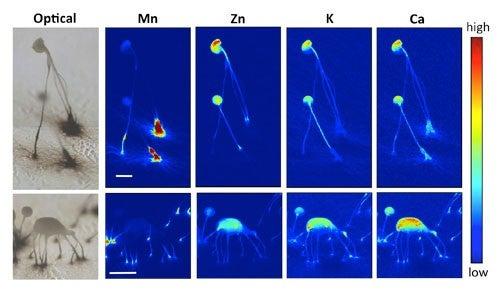SSRL Helps in Discovery of How Fungus Could Aid Mine Cleanups
from Harvard School of Engineering and Applied Sciences
from Harvard School of Engineering and Applied Sciences
Harvard-led researchers have discovered that an Ascomycete fungus that is common in polluted water produces environmentally important minerals during asexual reproduction.
The key chemical in the process, superoxide, is a byproduct of fungal growth when the organism produces spores. Once released into the environment, superoxide reacts with the element manganese (Mn), producing a highly reactive mineral that aids in the cleanup of toxic metals, degrades carbon substrates, and controls the bioavailability of nutrients.
The results, which will inform a wide range of future studies in microbiology, environmental chemistry, developmental biology and geobiology, were published online this week in the Proceedings of the National Academy of Sciences (PNAS).
The principal investigator was Colleen Hansel, a faculty associate at the Harvard School of Engineering and Applied Sciences (SEAS). Co-authors of the study included SLAC's Sam Webb, staff scientist at the Stanford Synchrotron Radiation Lightsource.
Visit Harvard SEAS to read the full announcement.

(Image courtesy of Colleen Hansel)